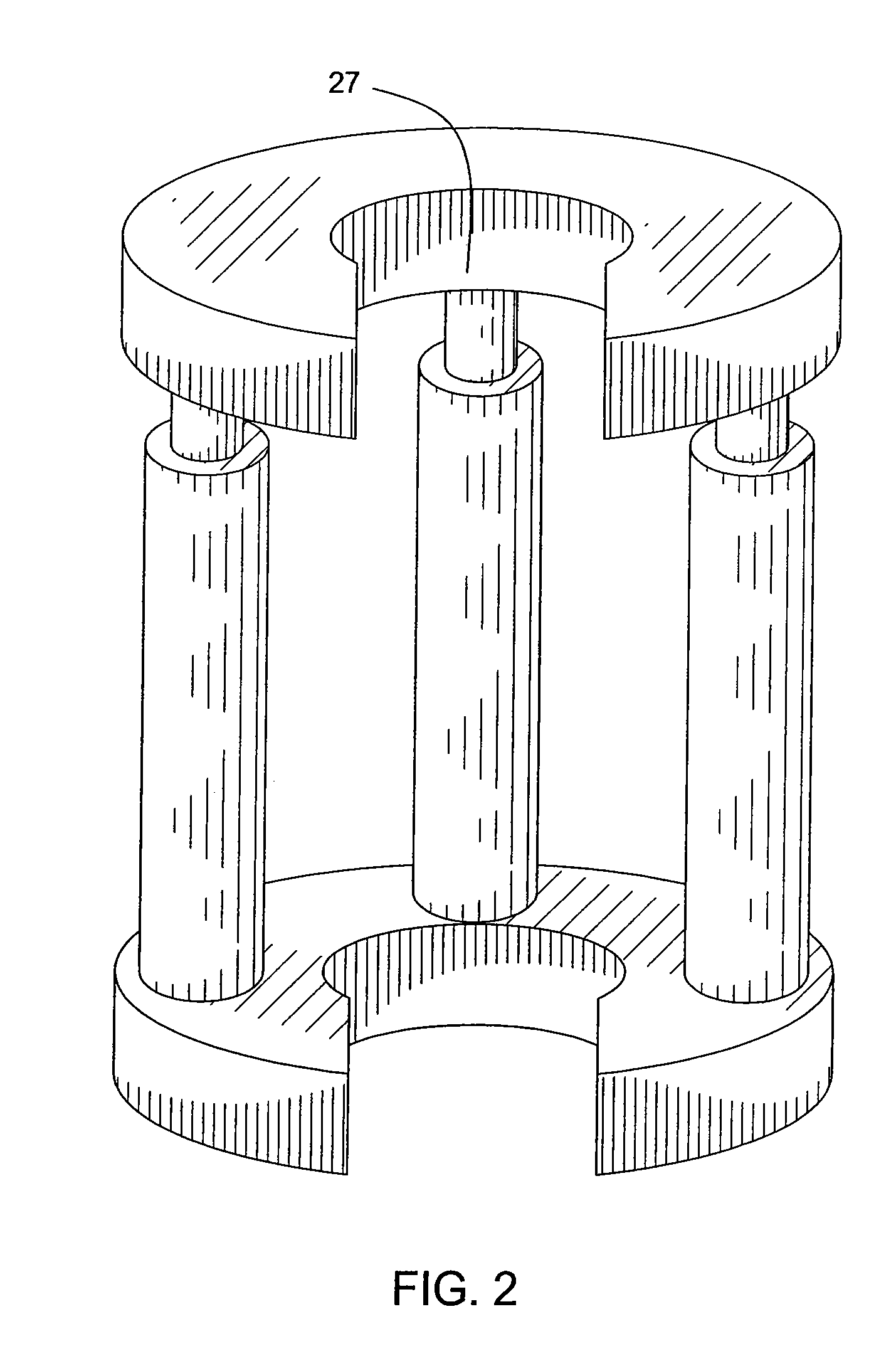Controlled shared load casing jack system
a shared load and jack system technology, applied in the direction of drilling casings, drilling pipes, borehole/well accessories, etc., can solve the problems of limited heavy load situations, difficult removal of tubulars from wellbores, and difficulty in using elevators to pull tubulars from wellbores,
- Summary
- Abstract
- Description
- Claims
- Application Information
AI Technical Summary
Benefits of technology
Problems solved by technology
Method used
Image
Examples
Embodiment Construction
[0018]FIG. 1 illustrates a cross sectional elevation view of a tubular 100 attached to a lifting apparatus 1. The tubular 100 is any tubular for use in downhole wellbores such as, but not limited to, casing, liner, drill string, coiled tubing, and production piping. The lifting apparatus 1 includes a gripping member 10 for gripping the tubular 100. As shown, the gripping member 10 is a spider type gripper such as that disclosed in U.S. Publication No. 2004 / 0251055 A1, which is herein incorporated by reference; however, it should be appreciated that the gripping member 10 may be any type known in the art such as a spear, as disclosed in U.S. Publication No. 2005 / 0051343 A1, which is herein incorporated by reference, or any other device adapted to grip tubulars. The gripping member 10 attaches to a lifting member 20.
[0019] The lifting member 20, as shown, comprises a hydraulic jacking system with one or more fluid operated cylinders 21 attached to a top plate 23 and a bottom plate 25...
PUM
 Login to View More
Login to View More Abstract
Description
Claims
Application Information
 Login to View More
Login to View More - R&D
- Intellectual Property
- Life Sciences
- Materials
- Tech Scout
- Unparalleled Data Quality
- Higher Quality Content
- 60% Fewer Hallucinations
Browse by: Latest US Patents, China's latest patents, Technical Efficacy Thesaurus, Application Domain, Technology Topic, Popular Technical Reports.
© 2025 PatSnap. All rights reserved.Legal|Privacy policy|Modern Slavery Act Transparency Statement|Sitemap|About US| Contact US: help@patsnap.com



